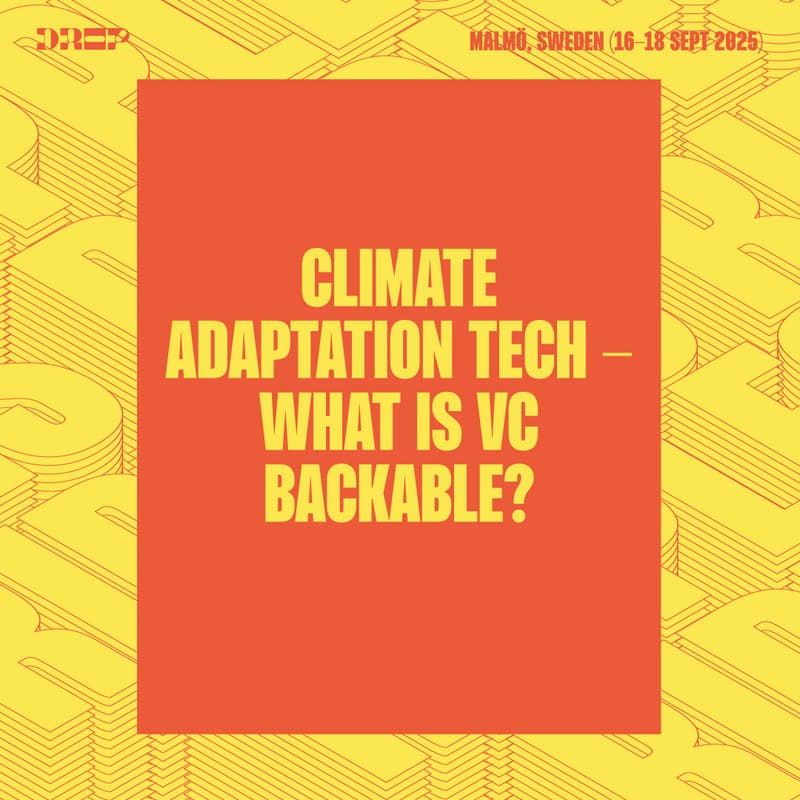

Climate Adaptation Tech - What is VC backable?
Ripple Hosts
Ollie Potter
NatureTech Memos
Will Everill
UpRoot Capital
TL;DR
Climate Adaptation Technology (CAT) is a fast-emerging category focused on solutions that help industry and society deal with our escalating climate-change-induced risks. Unlike mitigation tech, CAT addresses impacts already underway—like extreme weather, wildfires, and sea-level rise—creating a $2T+ market by 2030.
This event explores investable CAT segments, success metrics beyond CO₂, and where venture capital can drive scalable, high-impact adaptation solutions.
Topic overview
Why is the topic relevant?
As climate impacts intensify globally, Climate Adaptation Technology (CAT) is emerging as a distinct innovation category with exceptional growth potential. Unlike broader climate tech that encompasses mitigation efforts, CAT specifically addresses how we adapt to and manage unavoidable climate risks that are already manifesting.
The CAT market represents a $2+ trillion opportunity by 2030, driven by the growing frequency and severity of climate impacts that public and private sectors must now navigate. CAT innovations help organizations prepare for, respond to, and build resilience against specific climate risks including:
Extreme weather events (floods, droughts, hurricanes)
Wildfire detection and management
Infrastructure vulnerability to rising sea levels
Emerging pest and invasive species threats
This focused exploration will identify the specific CAT segments ripe for venture investment, highlighting companies with technological moats, capital-efficient growth models, and the potential for 10x returns within the venture timeframe.
What’s up for discussion?
How do we define the boundaries of what counts as “CAT” without the category becoming so broad it loses meaning? Where are the most significant overlaps between adaptation and mitigation?
What CAT solutions show the most promise for commercial deployment and scaling in the next 3-5 years?
What is venture bankable?
Which sectors (utilities, FIRE, defense, transportation, cities, agriculture, aquaculture, etc. ) demonstrate the strongest demand signals?
What needs to be true to allocate more financial capital to CAT?
How can we measure success in CATinvestments when traditional metrics like "tons of CO₂ avoided" don't apply? What frameworks should we develop to quantify value?
Dream outcome
To spark talking points and connections between early stage CAT founders and Investors/Corporates actively investing in /affected by this space.
Who should attend?
Founders running early-stage CAT companies
Climate investors exploring the Adaptation side of Climate-tech
Finance, Insurance, and Real Estate risk assessment professionals
Corporate decision-makers from highly exposed industries (utilities, construction, transportation, real estate),
Government and defense representatives developing climate adaptation or resilience strategies
Subject matter experts from sectors facing immediate climate impacts